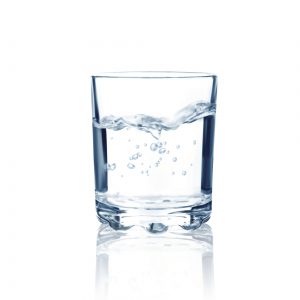What are chloramines?
The chloramines are a group of compounds that contain chlorine and nitrogen. There are three different forms: monochloramine (NH2Cl), dichloramine (NHCl2) and trichloramine (NCl3). They are easily converted from one to another. They are yellow to colorless liquids with a strong ammonia odor.
Chloramines, especially monochloramine, have been used as water disinfectants. Monochloramine is a weaker disinfectant than chlorine, but more stable. Because of this, monochloramine provides better protection against bacterial regrowth in systems with large storage tanks and dead-end water mains.
Why disinfect drinking water?
 All drinking water suppliers using surface water are required by the U.S. Environmental Protection Agency (EPA) to use disinfectants to eliminate disease-causing organisms in drinking water supplies. Disinfection of drinking water has benefited public health enormously by lowering the rates of infectious diseases (i.e. typhoid, hepatitis, and cholera) spread through untreated water. Utilities must also maintain a residual disinfectant throughout the drinking water distribution system to assure there is no bacterial growth once the water has left the treatment plant.
All drinking water suppliers using surface water are required by the U.S. Environmental Protection Agency (EPA) to use disinfectants to eliminate disease-causing organisms in drinking water supplies. Disinfection of drinking water has benefited public health enormously by lowering the rates of infectious diseases (i.e. typhoid, hepatitis, and cholera) spread through untreated water. Utilities must also maintain a residual disinfectant throughout the drinking water distribution system to assure there is no bacterial growth once the water has left the treatment plant.
What are the byproducts of chloramination?
Chloramines do not tend to react with organic compounds, so many systems will experience fewer incidences of taste and odor complaints when using chloramine. Use of chloramines instead of chlorine prevents the formation of harmful byproducts like trihalomethanes.
What are the health effects of chloramine?
Some people who use water containing chloramine in excess of 4.0 mg/L may experience irritation to their eyes and nose. Chloramine can cause and aggravate respiratory problems. Chloramine fumes can cause an individual to become congested and cause sneezing, sinus congestion, coughing, choking, wheezing, shortness of breath and asthma. These problems are most commonly encountered in swimming pools containing excess chloramines. Chloraminated water that meets EPA’s standard is safe to use for drinking, bathing, cleaning laundry, and other household activities.
Are there special considerations for using chloramine to disinfect public water supplies?

Yes, people on kidney dialysis may be affected. During dialysis, chemicals in water can move into blood, so the water must be pretreated to remove the chlorine and ammonia. Medical treatments centers that perform dialysis are responsible for purifying the water that enters dialysis machines. If the chloraminated water is not filtered, some dialysis patients develop a type of anemia where the blood cannot carry enough oxygen to the body’s cells.
People with home dialysis machines should check with their physician or equipment supplier to determine the proper filtration adjustment to be made prior to use of water treated with chloramines. Also rubber components are susceptible to damage from exposure to chloraminated water. Fresh and saltwater fish in aquaria are sensitive to chlorine and chloramine in water. An appropriate water additive should be used to remove the chlorine or chloramines before it is used in an aquarium.
Updated 2023
